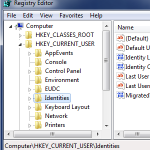Product keys are usually in the form of a line of alphanumeric characters. These is included with most types of software products that you purchase. When buying a software and installing it, you are usually prompted to enter your product key. This may take place after opening the program or even before installing it. The product key help to ensure that the software you bought is proper and registered legally. They also help to stop illegal software distribution to those who did not buy the software. Microsoft Operating Systems all Read More
Securing Domain Controllers
Domain Controllers Security Issues When it comes to Windows Server 2003 Active Directory networks, one of the most important server roles which can be configured is probably the domain controllers role. Domain controllers perform a number of important functions and control activities within a domain, including the following: Contain a replica of the Active Directory directory for the domain to which it belongs, and is responsible for managing that directory Provide authentication services for the network. Store and distribute group policies. Manage access to network resources within the domain. Manage Read More
How to Clean the Registry

The longer a computer is used, the more cluttered the registry can become because most applications these days do not remove all traces of themselves when deleted. This can slow Windows’ performance. So it is essential to know how to clean the Windows registry to speed up the PC’s performance. Cleaning it up effectively is not easy, though. The steps for doing so are outlined below. The Windows registry is the Windows component that has all the information about the computer and the software installed on the computer. The Windows Read More
Understanding Certificate Authorities
An Overview on Certificate Authorities In the Public Key Infrastructure (PKI), digital certificates are based on public key cryptography. The PKI consists of a set of components, policies, protocols, and technologies that provide data authentication, integrity, and confidentiality through the use of certificates, and public and private keys. Data is protected by applying a hashing algorithm and signature algorithm to the original message. A hashing algorithm is an intricate mathematical algorithm which is applied to the message. The hashing algorithms which are commonly used are MD2, MD4, MD5, and SHA-1. Read More
Understanding DNS Zones
DNS Zones Overview A DNS zone is the contiguous portion of the DNS domain name space over which a DNS server has authority. A zone is a portion of a namespace. It is not a domain. A domain is a branch of the DNS namespace. A DNS zone can contain one or more contiguous domains. A DNS server can be authoritative for multiple DNS zones. A non-contiguous namespace cannot be a DNS zone. A zone contains the resource records for all of the names within the particular zone. Zone files Read More
MSOCACHE
MSOCACHE (Local Install Source) is a setup feature that Microsoft deploys with Microsoft Office 2003. It is a hidden folder that is installed on the target computer’s local hard drive. It can occupy up to 290 Megabytes (MB) of space depending on the Microsoft Office programs that are installed on the computer. This feature eliminates the need to insert the Microsoft Office installation CD to later install components that were not included in the initial configuration options. What Does MSOCACHE Do? MSOCACHE is not just for making it easier for Read More
NTFS Permissions after Copying or Moving Files
When copying or moving a file or folder, the permissions may change depending on where you move the file or folder. Copying Files and Folders When copying folder or files from one folder to another folder or from one partition to another partition, permissions for this files or folders may change. When copying a folder or file within same NTFS partition, the copy of the folder or file inherits the destination folder permissions. When copying a folder or file between different NTFS partitions, the copy of the folder or file Read More
Windows Remote Access
Windows Remote Access is a set of components which allow remote users to access centralized computing resources. Windows Remote Access consists of the following components: Remote Access Clients Computers which are running a Windows operating system creates either a dial-up or virtual private network connection to the remote access server. The remote access client can use either a manually configured connection or a Connection Manager (CM) profile. Remote Access Server A computer running a member of the Windows 2000 Server or Windows Server 2003 families and the Routing and Remote Read More
Securing DNS Servers
Domain Name System (DNS) is the primary name registration and resolution service used in Windows Server 2003. DNS provides a hierarchically distributed and scalable database; provides name registration and name resolution services, and service location for Windows 2000 and Windows Server 2003 clients; and locates domain controllers for logon. A DNS server is a computer running the DNS Server service that provides these domain name services. The common threats to DNS servers are: Denial-of-service (DoS) attacksoccur when DNS servers are flooded with recursive queries in an attempt to prevent the Read More
hpboid.exe
hpboid.exe is meant to be Hewlett Packard’s Status Server application. This file is installed by the drivers of some HP business laser printers; these printers are part of the Enterprise Configuration Agent (EAC) technology developed by HP. This technology enables the drivers to send automated queries to the printer, irrespective of it being a local resource or part of a network, and based on the output for the query, the printer’s physical configuration is automatically updated in the Windows printer configuration screen. Any new attachment that you connect to a Read More


Share on: